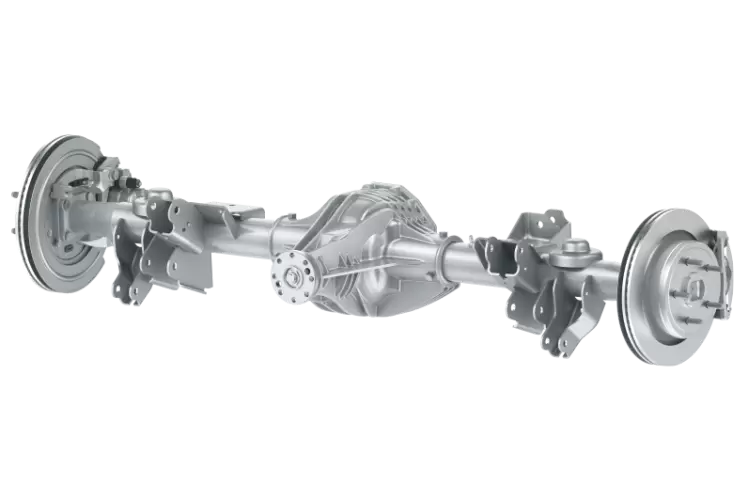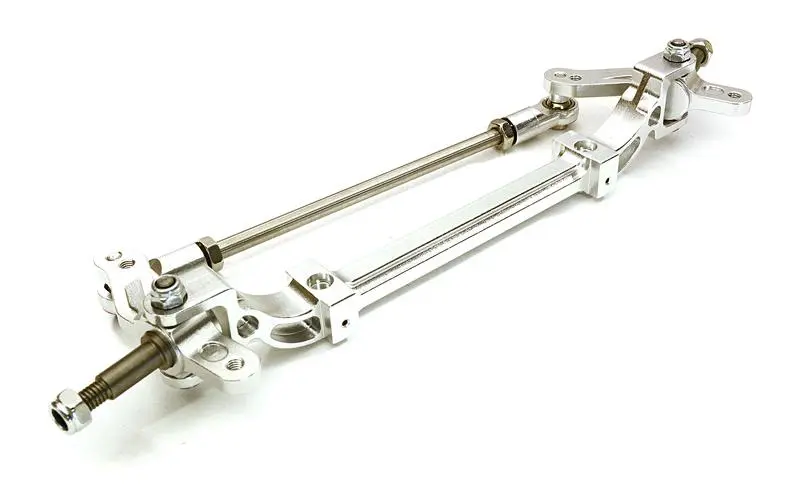Product Description
2200Lbs 5bolt Trailer Parts Rubber Half Torsion Beam Axles with Wheel Hub
Offers a wide range of load capacity to meet the buyer’s requirement and choice. Stronger and durable spindle and easy to replace. Provides a smooth, quiet, safe ride and can eliminate the need for an trailer axle.
| Part Number | Hub Type | Cap. Per Pair | P.C.D. | HUB Face (TR) | Axle Length | Start Angle | Finish |
| TA1100HN | Idler Hub | 1100 lbs | 4-4.0″ 5-4.5″ |
Flexible | 600mm | various | Black/Galv. |
| TA1750HN | Idler Hub | 1750 lbs | 4-4.0″ 5-4.5″ |
Flexible | 600mm | various | Black/Galv. |
| TA2200HN | Idler Hub | 2200 lbs | 4-4.0″ 5-4.5″ |
Flexible | 650mm | various | Black/Galv. |
| TA2200HE | 9″ Electric Brake Hub | 2200 lbs | 4-4.0″ 5-4.5″ |
Flexible | 650mm | various | Black/Galv. |
| TA2200HH | 9″ Hydraulic Brake Hub | 2200 lbs | 4-4.0″ 5-4.5″ |
Flexible | 650mm | various | Black/Galv. |
| TA3500HE | 10″ Electric Brake Hub | 3500 lbs | 5-4.5″ 6-5.5″ |
Flexible | 800mm | various | Black/Galv. |
| TA3500HH | 10″ Hydraulic Brake Hub | 3500 lbs | 5-4.5″ 6-5.5″ |
Flexible | 800mm | various | Black/Galv. |
1) Do you have factory?
CZPT :
Yes, we have our own factory, own engineers, we can meet custom’s unique requirement.
2) Do you provide sample? Free or charge?
CZPT :
Sample can be submitted for clients check and approval ; Normal sample will be take cost and can be consider to return back since order be placed.
3) What is your MOQ?
CZPT :
MOQ 100 for trailer axles
MOQ 3000 for trailer axles parts assembly
4) Can you manufacture the parts according to our size?
CZPT :
Depend on make tooling we can support your to be achieved your fixed request size for items.
5) What is your term of payment?
CZPT :
Normally for bulk TT., Irrevocable L/C at sight will be workable.
For samples , Paypal can be accept.
6) How long is your delivery time?
CZPT :
Normal 30 working days for delivery ;
CZPT time be about 35-40 working days.
7) Can I delivery the goods from other supplier to your factory? Then load together?
CZPT :
Sure ,we can accept and support .
/* March 10, 2571 17:59:20 */!function(){function s(e,r){var a,o={};try{e&&e.split(“,”).forEach(function(e,t){e&&(a=e.match(/(.*?):(.*)$/))&&1
| After-sales Service: | 1 Year Under Regular Operation |
|---|---|
| Condition: | New |
| Axle Number: | 1,2,3 |
| Application: | Trailer |
| Certification: | ISO |
| Material: | Steel |
| Customization: |
Available
| Customized Request |
|---|

What are the considerations for off-road vehicles using beam axles?
Off-road vehicles that use beam axles have specific considerations to optimize performance and durability in challenging terrain. Here are the key factors to keep in mind when designing or using off-road vehicles with beam axles:
1. Ground Clearance:
Off-road vehicles require sufficient ground clearance to navigate over rocks, ruts, and uneven terrain. Beam axles, with their ability to provide good ground clearance, are a practical choice for these applications. Vehicle designers may also opt for suspension lifts to further increase ground clearance.
2. Wheel Articulation:
Off-roading often involves traversing uneven surfaces where individual wheel movement is essential to maintain traction and stability. Beam axles offer excellent wheel articulation, allowing each wheel to move independently and adapt to the terrain, keeping the tires in contact with the ground. This enhances the vehicle’s ability to overcome obstacles and maintain grip on challenging trails.
3. Durability and Impact Resistance:
Off-road environments can subject a vehicle to rough conditions and potential impacts from rocks, tree roots, and other obstacles. Beam axles are designed to be durable and resistant to damage. The choice of materials and construction should prioritize strength and impact resistance to ensure the axles can withstand the rigors of off-roading.
4. Suspension Tuning:
Off-road vehicles often require suspension tuning to achieve optimal performance. This includes selecting appropriate shock absorbers, springs, and other components to balance ride comfort and off-road capability. Tuning the suspension can improve handling, reduce body roll, and enhance overall off-road performance.
5. Differential Locking:
Off-road vehicles may benefit from differential locking mechanisms that ensure power is evenly distributed between the wheels on an axle. This helps prevent wheel spin and ensures that both wheels receive power for maximum traction. Locking differentials can be a valuable addition to vehicles with beam axles.
6. Tire Selection:
The choice of off-road tires is crucial. Tires with deep treads and appropriate tread patterns are essential for traction in mud, sand, and rocks. Tire pressure can also be adjusted to suit the terrain, and beadlock wheels can help secure the tires in challenging conditions.
7. Regular Maintenance:
Off-road vehicles with beam axles should undergo regular maintenance to ensure they remain in top condition. This includes inspecting and lubricating the axles, checking for signs of wear or damage, and addressing any issues promptly to prevent breakdowns during off-road adventures.
8. Customization:
Off-road enthusiasts often customize their vehicles with features like winches, skid plates, and roll cages to enhance off-road capabilities and safety. These modifications should be integrated with the beam axle suspension to ensure compatibility and functionality.
Summary:
Off-road vehicles using beam axles require careful consideration of ground clearance, wheel articulation, durability, and various other factors to optimize their performance in challenging terrains. Proper suspension tuning, tire selection, and maintenance are essential to ensure a safe and enjoyable off-roading experience.

How does a live axle differ from a dead axle in the context of beam axles?
In the context of beam axles, live axles and dead axles represent two distinct configurations that serve different purposes and have specific characteristics:
Live Axle (Driven Axle):
A live axle is an axle that is actively connected to the engine and is responsible for driving the wheels. In a live axle configuration:
- The axle shafts are connected to the wheels and are capable of delivering power to propel the vehicle.
- The wheels on a live axle are actively powered and provide propulsion, typically in rear-wheel-drive or four-wheel-drive (4WD) vehicles.
- Live axles are common in trucks, off-road vehicles, and 4×4 vehicles, where the ability to provide power to multiple wheels is crucial for traction in challenging terrain.
- Live axles are sometimes referred to as “driven axles” because they actively drive the vehicle.
Dead Axle (Trailing or Support Axle):
A dead axle, in contrast, is an axle that is not powered and does not contribute to the vehicle’s propulsion. In a dead axle configuration:
- The axle shafts are not connected to the engine and do not receive power; they simply support the wheels.
- Dead axles are often used in the front of front-wheel-drive vehicles, where the engine provides power to the front wheels, and the rear wheels are supported by dead axles.
- These axles are also used in trailers and semi-trailers, where they support the weight of the trailer but do not provide power to the wheels.
- Dead axles are sometimes referred to as “trailing axles” or “support axles” because they do not actively drive the vehicle.
Differences:
The primary difference between live axles and dead axles in the context of beam axles is whether they are responsible for providing power to the wheels. Live axles actively drive the vehicle, while dead axles are passive and serve a support or trailing role. The choice between these configurations depends on the specific vehicle design and its intended use, with live axles favored for off-road and high-traction applications and dead axles used for support and weight distribution.

How do beam axles compare to other types of axles in terms of durability?
Beam axles, also known as solid axles or live axles, have their own set of advantages and disadvantages when it comes to durability compared to other types of axles. Let’s compare the durability of beam axles to some common axle types:
1. Beam Axles vs. Independent Suspension Axles:
Beam Axles:
- Advantages:
- – Beam axles are known for their durability and robust construction.
- – They are less complex and have fewer moving parts compared to independent suspension systems, reducing the potential points of failure.
Independent Suspension Axles:
- Advantages:
- – Independent suspension axles can offer a smoother ride and better handling on paved roads.
- – They adapt to uneven terrain more effectively due to the independent movement of each wheel, which can reduce stress on the axle components.
2. Beam Axles vs. Torsion Axles:
Beam Axles:
- Advantages:
- – Beam axles are sturdy and suitable for heavy loads, making them common in applications like trucks and trailers.
- – They provide reliable load distribution, reducing the risk of overloading a single wheel.
Torsion Axles:
- Advantages:
- – Torsion axles are known for their maintenance-free operation and resistance to corrosion, as they have fewer exposed components.
- – They provide a smooth and independent suspension system, enhancing ride comfort for trailers and smaller recreational vehicles.
3. Beam Axles vs. Half-Shafts (Constant Velocity Axles – CV Axles):
Beam Axles:
- Advantages:
- – Beam axles are highly durable and can withstand significant loads and rough terrain, making them suitable for applications like off-road vehicles and trucks.
- – Their solid construction reduces the risk of component failure.
Half-Shafts (CV Axles):
- Advantages:
- – Half-shafts, often used in front-wheel-drive vehicles, provide better maneuverability and handling on paved roads due to their ability to pivot and accommodate steering.
- – They offer a balance between durability and adaptability to various road conditions.
While beam axles excel in terms of durability and load-bearing capacity, they may sacrifice some ride comfort and handling precision, particularly on uneven roads. The choice between beam axles and other axle types depends on the specific vehicle application and the trade-offs between durability, handling, and comfort.


editor by CX 2024-02-22